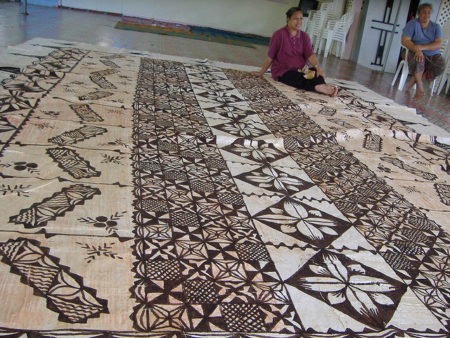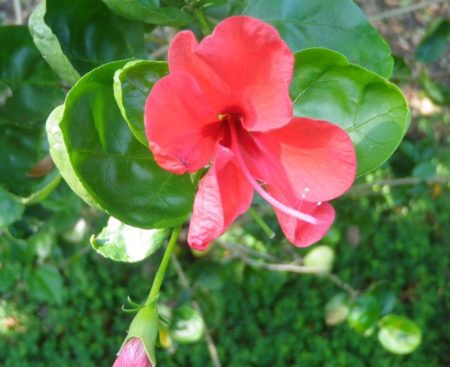The announcement of a fascinating new project on Kew’s tapa cloth collection from the Pacific is a great opportunity to remind myself about this wonderful specimen I encountered on Tonga a few years ago. Yes, everything is about me in the end.

Agrobiodiversity is crops, livestock, foodways, microbes, pollinators, wild relatives …
The announcement of a fascinating new project on Kew’s tapa cloth collection from the Pacific is a great opportunity to remind myself about this wonderful specimen I encountered on Tonga a few years ago. Yes, everything is about me in the end.

More from our friend Lex Thomson on the Pacific Hibiscus saga:
Excited to report on the finding of a presumed new Hibiscus species in Solomon Islands. This Hibiscus has several distinctive features including round, saucer-shaped leaves with an entire or shallowly crenulated margin and very small, bright red flowers with a windmill arrangement of petals. The serrated dark red eye may indicate a relationship with the Fijian Hibiscus storckii but other features suggest affinities with Indian Ocean islands Hibiscus such as Hibiscus liliiflorus. The new species appears of ancient origins and may represent a ‘missing link’ between Pacific Islands and Mascarene Islands Hibiscus. Am looking forward to working with Solomon Islands botanist Myknee Sirikolo to describe this new species, which is thus far known only from a 1970’s collection from Santa Cruz Islands and the photographed plant in Mrs Bronwyn Lilo’s garden (Gosi Anikisina) near Honiara.
This from the Facebook page of Savurua Botanical Gardens in Fiji.

Lots more work to be done, clearly.
I have said before that I would have a priori doubts about anything calling itself Talking Biotech. But I stand by what I also said in that post about the actual podcast of that name, by Dr Kevin Folta of the University of Florida, being largely free — though by no means entirely, alas — of the narrowness, nerdiness and preachyness that the name conjures up, at least for me. And so I congratulate Dr Folta on receiving a few days ago the Borlaug CAST Communications Award, given out annually by the Council for Agricultural Science and Technology (CAST). The recent episode on coffee, which we have have already Nibbled, is a pretty good introduction to his podcast, if you’re new to it. And I don’t say that just because I’m somewhat involved in the development of the coffee genetic resources conservation strategy mentioned therein.